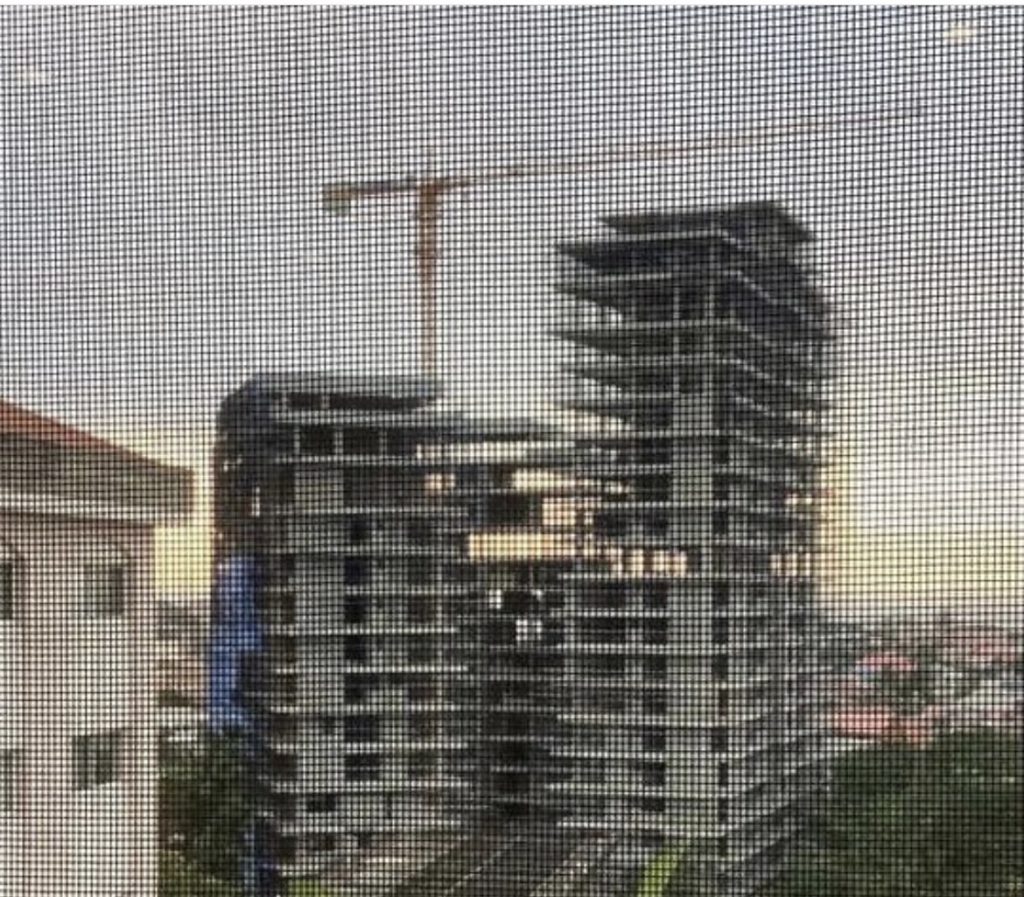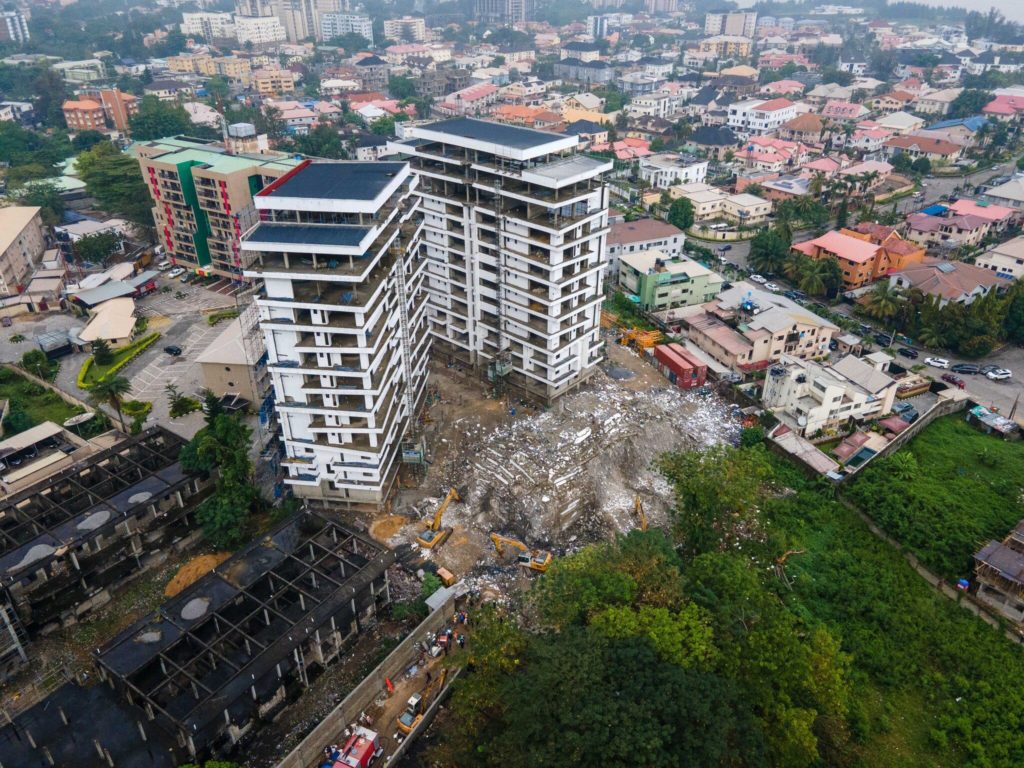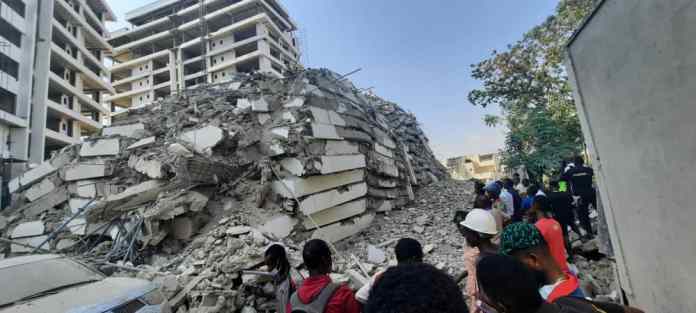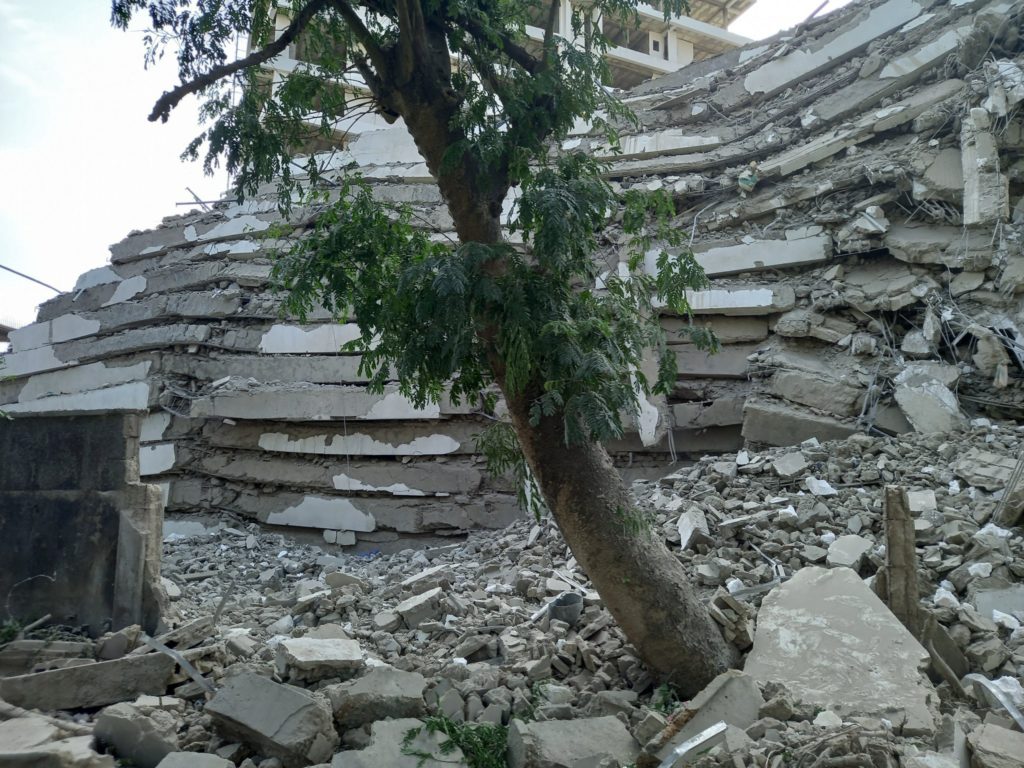Images included were not part of the original press release.
The tragic and most unfortunate event on Monday 1, November 2021, involving the sudden and total collapse of a 21-storey building (under construction), has become an event of national importance. We commiserate with the families that lost loved ones and pray that they will find God’s succour and consolation.
1. Structural Engineering Perspective
That this incident is a structural engineering disaster is certainly not in doubt, however, events of this nature and structural engineering problems in general, require careful and painstaking analysis and assessment of all the evidence and information relating to the collapsed building and the site, including the resulting debris, eye-witness accounts, and all other available details before arriving at a definitive statement.
The Nigerian Institution of Structural Engineers (NIStructE) the Professional body entrusted with the responsibility for Structural Engineering practice in Nigeria, immediately assembled an investigation team to visit the site and carry out a Preliminary Assessment of the incidence, and prepare an appropriate preliminary report.
It is important to emphasise that the practice of structural engineering is an elaborate science involving the application of numerous scientific principles and it is therefore seldom likely that accurate conclusions can be rushed without first carrying out the prerequisite investigations, testing, and computations. Our institution refrained from making speculative comments until now when our findings from the preliminary investigation are available. We are now in a position to make factual statements and provide guidance to the general public that will hopefully be enlightening but also reassuring that structures once well designed and implemented with the use of the appropriate professionals should remain safe throughout their service life.
As these findings remain preliminary until the recommended comprehensive investigation is carried out, and the outcome of the various Govermental and institutional panels have been determined, we should not in any way jeopardize the outcomes of the more detailed investigations being organized by various professional and regulatory bodies, it is our view that the outcome of our preliminary investigation will give a general indication of what likely led to the unfortunate incidence.
2. Summary of the Findings of the Preliminary Investigation
The following are the major preliminary findings:
2.1 There are clear indications of several design brief changes on the project and the engineering and management of these changes appear to have been seriously inadequate. The building that collapsed was initially designed for just six (6) floors, and later to Twelve (12) floors, before this was further changed to Fifteen (15) floors. It could not yet be established the adequacy of any properly designed and documented further revision to the eventual (and tragically, final) Twenty-One (21) floors that was being implemented and which collapsed.

2.2 There are also indications that more than two (2) structural engineering design firms worked on the project at different times.
2.3 The preliminary investigation also revealed some evidence of structural inadequacy in the construction and that signs of some structural distress had already started to show within certain elements of the building. Some remedial measures were already being undertaken to address some of this. The method of implementation of this was not in accordance with sound Structural Engineering practices.
2.4 Lack of proper quality control and quality assurance measures and processes during the construction was evident becoming noticeable as seen in the poor-quality of concrete materials and workmanship observed during the examination of the collapse debris.
All the above findings, which are very significant from the structural engineering point of view, need to be investigated further during the detailed investigation stage so that all factors related to the cause or causes of the collapse can be truly established and the appropriate lessons identified and implemented. We expect that the various committees that are being set up will have full access to much more information (such as all the structural drawings, the calculations, documents prepared and submitted for planning approval and for construction, material test results, site instructions and records, records of meetings, more eyewitness accounts, etc.).
3. Appraisal of the Other Two Blocks On the Site of the Collapsed Building
In the light of the already gathered preliminary information about the observed inadequacies of the collapsed building, as well as the possible destabilizing effects of the collapse on the adjoining and nearby buildings, it is imperative that a thorough and comprehensive structural integrity appraisal be carried out on the other two (2) buildings (14 and 15 storeys Respectively) on the same site.

4. Advice on Structural Integrity Appraisals and Engagement of Competent Professionals
This sad, but usually preventable, event of yet another building collapse, has resulted in a sudden surge of many property owners and occupiers requesting for Structural Integrity Tests to be carried out on their properties. In this regard, The Nigerian Institution of Structural Engineers (NIStructE), in continuation of its advocacy efforts, wishes to advise the general public as follows:
Please engage only competent and capable registered professionals on your projects and for these assessments. Structural Integrity Appraisal is a specialist knowledge and experience-based aspect of Structural Engineering, and to be sure of the accuracy and applicability, it is extremely important that the appraisal is carried out by qualified and registered Structural Engineers who have the requisite experience.
In recent times, the term ‘Structural Integrity test’ has become more of a common slang which is not in any way fully accurate for the desired purpose. There is no single test that can determine the structural stability of a building or structure. Instead a ‘Structural Integrity Appraisal’ is not just limited to carrying out some non-destructive tests to evaluate the properties of the concrete, but is a comprehensive and all-inclusive structural engineering evaluation of the entire structure which is tailored to suit the full objectives of the appraisal. It is only after this that a clean bill of health can be confirmed for the building.
The Nigerian Institution of Structural Engineers (NIStructE) maintains a register of its registered members and can be consulted on any matter of structural importance or concern.











